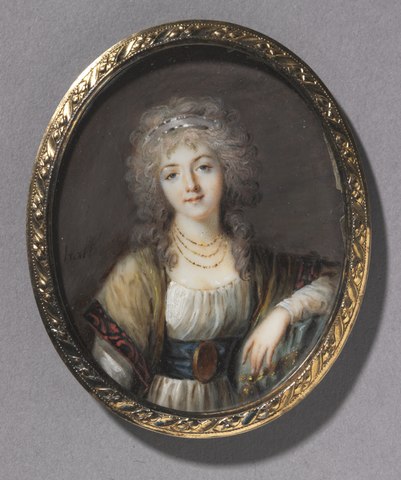
The Thammasat University Library has acquired a new book that should be useful for students interested in Asian studies, sociology, cultural studies, gender studies, and related subjects.
On Saving Face: A Brief History of Western Appropriation is by Michael Keevak.
The TU Library collection includes a number of books about different aspects of social behavior in Asia.
Professor Michael Keevak teaches in the Department of Foreign Languages at National Taiwan University. The TU Library also owns another book by Professor Keevak, Becoming Yellow: A Short History of Racial Thinking (2011).
TU students may access his other books, including The Story of a Stele: China’s Nestorian Monument and Its Reception in the West, 1625–1916 (HKUP, 2008) and The Pretended Asian: George Psalmanazar’s Eighteenth-Century Formosan Hoax (2004) through the TU Library Interlibrary Loan (ILL) service.
Here is the publisher’s description of his book:
In On Saving Face, Michael Keevak traces the Western reception of the Chinese concept of “face” during the past two hundred years, arguing that it has always been linked to nineteenth-century colonialism. “Lose face” and “save face” have become so normalized in modern European languages that most users do not even realize that they are of Chinese origin. “Face” is an extremely complex and varied notion in all East Asian cultures. It involves proper behavior and the avoidance of conflict, encompassing every aspect of one’s place in society as well as one’s relationships with other people. One can “give face,” “get face,” “fight for face,” “tear up face,” and a host of other expressions. But when it began to become known to the Western trading community in China beginning in the middle of the nineteenth century, it was distorted and reduced to two phrases only, “lose face” and “save face,” both of which were used to suggest distinctly Western ideas of humiliation, embarrassment, honor, and reputation. The Chinese were judged as a race obsessed with the fear of “losing (their) face,” and they constantly resorted to vain attempts to “save” it in the face of Western correction. “Lose face” may be an authentic Chinese expression but “save face” is different. “Save face” was actually a Western invention.

A review in the Taipei Times noted,
The earliest instance of “saving face” in English Keevak says he could find is from 1839, when a letter-writer to a newspaper in China suggested the British surrender a small amount of opium to the Chinese authorities in the person of a Viceroy sent by the Emperor to suppress the trade. As a result, the Viceroy might be able to “save his face.”
But the person who did most to popularize the term was one Arthur Smith, an American missionary and later a popular writer. “Losing face” and “saving face” became buzzwords in the late 19th century.
The original meaning was to avoid humiliation, but, Keevak argues, the Westerners turned it into a means of humiliating the Chinese, saying that “saving face” was a means of deception.
This was important in Confucian culture because one’s status depended on how others saw you. No, the Westerners said. It’s just a cover for Chinese duplicity in business dealings. Corruption was hidden behind politeness.
“Face” had been appropriated by the Westerners who made it into a despicable aspect of Chinese culture. This, in a nutshell, is Keevak’s theme.
This isn’t the end of the story, however. If the Chinese were able to employ devious trade practices under the cover of “saving face,” then the British and other foreigners were entitled to exercise their God-given right to tell what they presented as the truth, and stick to it come hell or high-water.
This continued into the period when British and French forces assisted China in putting down the Taiping Rebellion (1850 to 1864). Despite working together, the foreigners remained convinced that the Chinese were always trying to conceal something. Chinese “face” was ultimately a false face, in other words.
Keevak then looks at “face” in the centuries before the 19th, concluding that Chinese culture had become, in part, “little more than an appearance, and so ‘saving face’ was necessarily a deception as well.”…
So what conclusion should we come to? My feeling is that saving face is a universal phenomenon. You see it in politicians all the time, and I see myself employing the tactic on a regular basis. It’s no more a Chinese habit that any other, simply that Chinese perceptiveness has seen to it that it was they who identified it first, if not as specifically as the Westerners would have us believe. We employ devices to shore up our own self-esteem as well as to impress others.
Saving face is arguably a characteristic of human beings. It’s not so with animals, it would seem. One can’t imagine a dog or a lion saving face, whatever the innumerable images of them on Facebook might seek to imply. But people do it all the time, and probably in every corner of the globe.
Another critical response, from the Asian Review of Books, stated:
It may come as a surprise, but probably shouldn’t, that the seemingly well-worn concepts of “losing” and “saving face” are relatively modern and their wide usages in English date from the period of 19th-century imperialism. In his new (and refreshingly brief) book On Saving Face: A Brief History of Western Appropriation, Michael Keevak claims the terms’ wide acceptance can be quite precisely traced to a publication of the last decade of the 19th century.
The Chinese concept of “face” was almost singlehandedly brought into Western consciousness through the work of the late-nineteenth-century American missionary Arthur H Smith. Although the term had occasionally appeared in other works before him, this was the first time that anyone had really tried to isolate it and to describe it for a foreign audience.
People who live in East Asia are for the most part aware that the terms originated out here and probably assume that they are of Chinese origin, something Keevak notes is only partially true: “lose face” derives, via Pidgin English, from the Chinese diu lian or diu mianzi. This is what is known as a “calque” or perhaps more commonly a “loan translation”; other examples in English are “blue blood” (a direct translation of the Spanish sangre azul) and “flea market” (from the French marché aux puces), both so common that the foreign origins have for the most part been forgotten. Other cases of loan translation from Chinese are “no can do” and “long time no see”.
But the expression “save face”, which is Keevak’s focus, has no identifiable Chinese antecedent, but was a “foreign invention”, seemingly created in English by analogy, a fact recognized in editions of the Oxford English Dictionary of the period (which noted that “the exact phrase appears to not occur in Chinese”). Insofar as the phrase is used in Chinese, it seems to have been adapted back:
If we can see Chinese writers beginning to focus on “face” and “saving face” in the early decades of the twentieth century … it was just as much a response to Western discourse as it was any sort of direct borrowing.

(All images courtesy of Wikimedia Commons)
